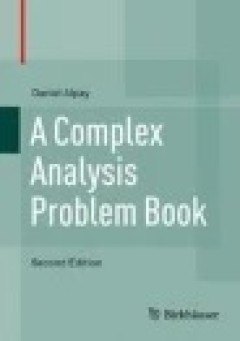Filter by

Oxygen Transport to Tissue XXXVII
This book contains the refereed contributions from the 42nd annual meeting of ISOTT. The annual meetings of ISOTT bring together scientists from various fields (medicine, physiology, mathematics, biology, chemistry, physics, engineering, etc.) in a unique international forum. ISOTT conferences are a place where an atmosphere of interaction is created, where many questions are asked after each p…
- Edition
- -
- ISBN/ISSN
- 978-1-4939-3023-4
- Collation
- xxxii, 537 halaman
- Series Title
- Advances in Experimental Medicine and Biology
- Call Number
- 546.7 OXY

Generalized Metric Spaces and Mappings
The idea of mutual classification of spaces and mappings is one of the main research directions of point set topology. In a systematical way, this book discusses the basic theory of generalized metric spaces by using the mapping method, and summarizes the most important research achievements, particularly those from Chinese scholars, in the theory of spaces and mappings since the 1960s. This bo…
- Edition
- edisi kesatu
- ISBN/ISSN
- 978-94-6239-215-1
- Collation
- -
- Series Title
- -
- Call Number
- 510

Generalized Continua as Models for Classical and Advanced Materials
This volume is devoted to an actual topic which is the focus world-wide of various research groups. It contains contributions describing the material behavior on different scales, new existence and uniqueness theorems, the formulation of constitutive equations for advanced materials. The main emphasis of the contributions is directed on the following items - Modelling and simulation of natura…
- Edition
- edisi kesatu
- ISBN/ISSN
- 978-3-319-31719-9
- Collation
- XII, 457 pages
- Series Title
- -
- Call Number
- 531 Gen

Generalized Connectivity of Graphs
“The monograph under review is devoted to the exposition of results about the generalized connectivity and generalized edge-connectivity of graphs. … Reading it does not require significant background in the relevant fields, as most concepts are introduced and defined … . I would recommend it for a researcher, graduate student, or senior undergraduate student who has an interest in pursui…
- Edition
- -
- ISBN/ISSN
- 978-3-319-33827-9
- Collation
- -
- Series Title
- -
- Call Number
- 511.5

Generalized Adjoint Systems
Topics Calculus of Variations and Optimization,
- Edition
- -
- ISBN/ISSN
- 978-3-319-16651-3
- Collation
- -
- Series Title
- -
- Call Number
- 512

A Complex Analysis Problem Book
This second edition presents a collection of exercises on the theory of analytic functions, including completed and detailed solutions. It introduces students to various applications and aspects of the theory of analytic functions not always touched on in a first course, while also addressing topics of interest to electrical engineering students (e.g., the realization of rational functions and …
- Edition
- Ed. 2
- ISBN/ISSN
- 78-3-319-42181-0
- Collation
- -
- Series Title
- -
- Call Number
- 515.9 ALP c

Overland Flow Dynamics and Solute Transport
This book provides essential background knowledge on a wide range of hydrological processes governing contaminant transport from soil to surface water across a range of scales, from hillslope to watershed. The mathematical description of these processes is based on both well-known and unique analytical solutions of different initial and boundary problems (primarily using methods from the kinema…
- Edition
- -
- ISBN/ISSN
- 978-3-319-21801-4
- Collation
- xii, 287 halaman
- Series Title
- Theory and Applications of Transport in Porous Media
- Call Number
- 532 RUM o

A Bridge between Conceptual Frameworks: Sciences, Society and Technology Studies
This book analyzes scientific problems within the history of physics, engineering, chemistry, astronomy and medicine, correlated with technological applications in the social context. When and how is tension between disciplines explicitly practised? What is the conceptual bridge between science researches and the organization of technological researches in the development of industrial applicat…
- Edition
- -
- ISBN/ISSN
- 978-94-017-9645-3
- Collation
- -
- Series Title
- History of Mechanism and Machine Science
- Call Number
- 530.01 BRI b

A Basic Course in Probability Theory
This text develops the necessary background in probability theory underlying diverse treatments of stochastic processes and their wide-ranging applications. In this second edition, the text has been reorganized for didactic purposes, new exercises have been added and basic theory has been expanded. General Markov dependent sequences and their convergence to equilibrium is the subject of an ent…
- Edition
- -
- ISBN/ISSN
- 978-3-319-47974-3
- Collation
- -
- Series Title
- Universitext
- Call Number
- 519.2 BHA b

A 3D Visualization Teaching-Learning Trajectory for Elementary Grades Children
This monograph describes the development and use of a 3D visualization teaching-learning trajectory for elementary age learners. Using design research principles, the authors developed this trajectory using the NCTM recommendations and the Spatial Operational Capacity (SOC) theoretical framework to guide lesson development. The SOC framework utilizes actual 3D models, 2D and abstract representa…
- Edition
- -
- ISBN/ISSN
- 978-3-319-29799-6
- Collation
- -
- Series Title
- -
- Call Number
- 510.7 SAC t
 Computer Science, Information & General Works
Computer Science, Information & General Works  Philosophy & Psychology
Philosophy & Psychology  Religion
Religion  Social Sciences
Social Sciences  Language
Language  Pure Science
Pure Science  Applied Sciences
Applied Sciences  Art & Recreation
Art & Recreation  Literature
Literature  History & Geography
History & Geography